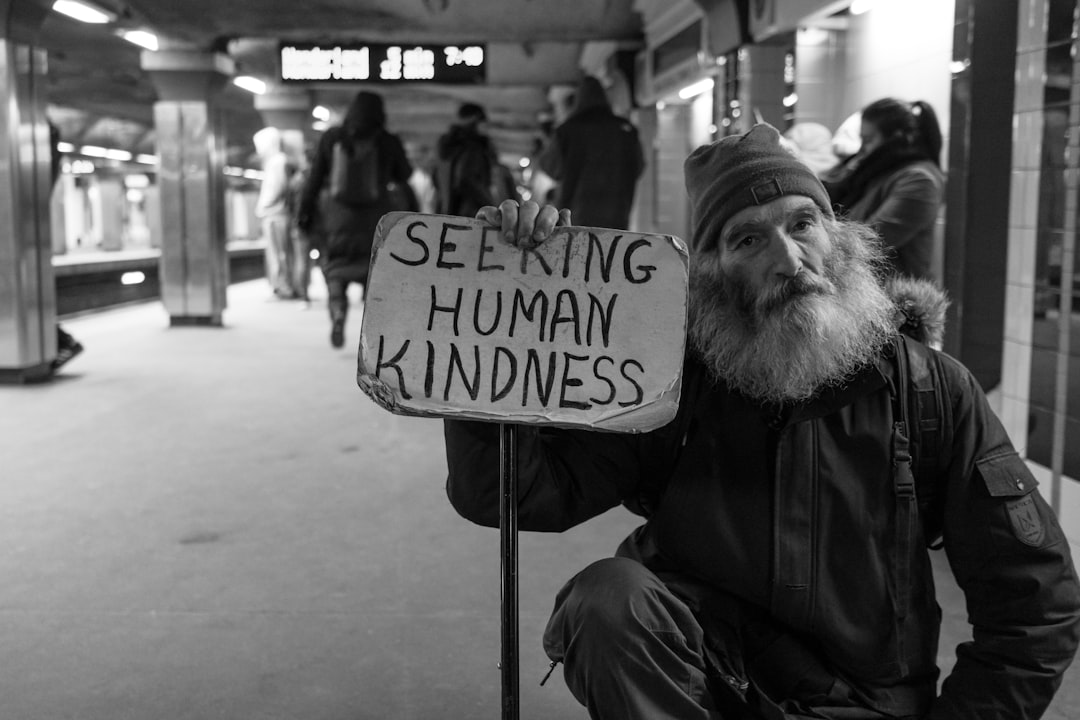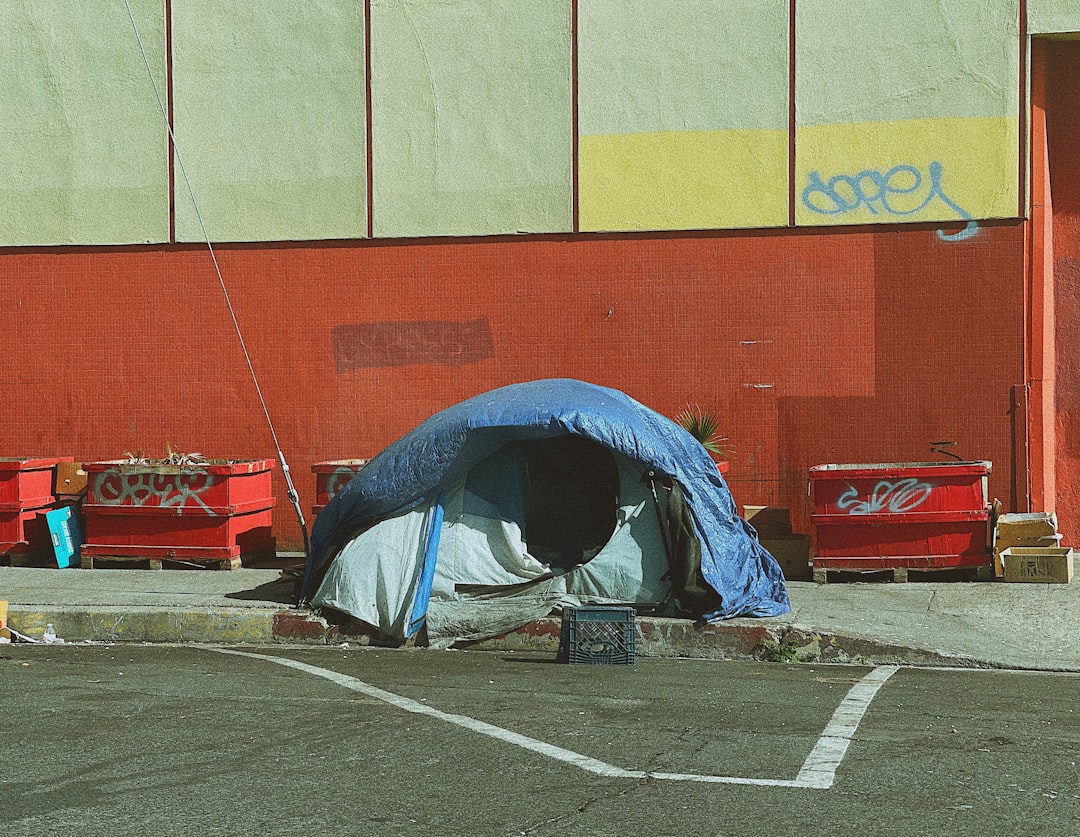
Homelessness has killed more people than natural disasters in California. Ten times more people will die on L.A.'s street in 2019 (~1,000) than died in the deadly 2018 forest fires (103). Over three years, more people will die on the streets of L.A. than in San Francisco's 1906 earthquake
I read a story about how an economic recession turned into a complete collapse of society. As interesting as the story was, I am not sure that a total failure would be the case; however, it looks like a page out of the book in many parts of California. The story follows a young man who had an excellent job in I.T., had a condo outside of Washington, D.C., and was living the American dream. As the economy worsened, he lost his job, house, and car. The story's hero was quickly living on the streets and had to learn how to live without a home. In the story, society fell apart, and social services, law enforcement, and other government services were discontinued because no one was left to pay taxes.
Why am I sharing this story? Today we are looking at real unemployment numbers for men. They are struggling in the workplace. One in three American men with only a high school diploma — 10 million men — is now out of the labor force. The most significant drop in employment is among young men aged 25 to 34.
According to to think tank research fellow Richard Reeves's new book, Of Boys and Men, males are much more likely to feel socially excluded and less likely to thrive after divorce (if they don't remarry). At the same time, girls outperform boys in most academic disciplines, rapidly closing the gap in those in which boys lead, not just in schools but in universities across the western world. In the U.S., 57% of bachelor's degrees are now women. That means that men between the ages of 25 and 34 are now more likely to be employed in minimum-wage jobs.
Declining wages have put housing out of reach for many workers: in every state, more than the minimum wage is required to afford a one- or two-bedroom apartment at Fair Market Rent. In the median state, a minimum-wage worker would have to work 89 hours each week to afford a two-bedroom apartment at 30% of their income, which is the federal definition of affordable housing. Thus, inadequate income leaves many people homeless.
61% of homeless people are men
The number of unsheltered men went up by 7% between 2018 and 2019.
The number of men experiencing homelessness rose by 5% between 2018 and 2019.
90% of homeless veterans in 2019 were male.
The Homelessness rate is rising in California, and people are calling for the governor to declare a state of emergency to address the issue. The time for half-measures has passed. We have seen the number of homeless growing in most cities in California. The health concerns in Los Angeles, the San Francisco Bay Area, Sacramento, and San Diego, threaten public health and safety. There has been an increase in T.B., Hepatitis, and flesh-eating bacteria.
In 2018, Gavin Newsom ran for California Governor on the platform that he could fix the growing homeless issues. Winning the election with 62% of the vote, he had a mandate and political capital to make radical changes. Where are the 3.5 million new units he promised? He stated that he would appoint a homeless czar focusing on rapid rehousing. In August (2022), Newsome announced he would not nominate a homelessness czar. And less housing will be built this year than in any other year over the last decade.
The crisis is worsening. The number of people without homes has increased, and violence both by and against them has risen by 30% and 37%. In June (2022), No relief was on site, and Newsome let a package of housing reform measures die. In August (2022).
California needs leadership to resolve this crisis. It will take someone willing to take bold and decisive action. Newsome can still impact, starting with declaring a state of emergency.
This allows the governor to waive gratuitous regulations blocking and preventing the creation of temporary shelters. The declaration will open California up for federal relief money as well. It also gives him the ability to spend state emergency funds.
The Situation
I generally am not for using the powers of the governor's office just because he can. We all witnessed how the powers were miss used during COVID, closing some businesses and letting others stay open. It was confusing and led to miss trust of the office.
California's Constitution recognizes the state's responsibility "to mitigate the effects of natural, manmade, or war-caused emergencies that result in conditions of disaster or in extreme peril to life, property, and the resources of the state, and generally to protect the health and safety and preserve the lives and property of the people of the state.."
Homelessness has killed more people than natural disasters in California. Ten times more people will die on L.A.'s street in 2019 (~1,000) than died in the deadly 2018 forest fires (103). Over three years, more people will die on the streets of L.A. than in San Francisco's 1906 earthquake.
In Los Angeles and San Francisco, many residents are afraid to leave their homes and simply walk past homeless encampments.
Homelessness has become a human rights crisis. Last year, the United Nations Special Rapporteur on human rights condemned California's response to homelessness as "cruel and inhuman."
People ask city council members and police chiefs across the state why they allow homeless people to "camp" on the street.
In 2018 Orange County's decision to remove hundreds of homeless people from encampments along the Santa Ana River was stopped by U.S. District Judge David Carter. He demanded that Orange County officials, cities, and homeless advocates collaborate to find shelter for hundreds of people living in the camps.
As a parks commissioner, I worked with the First Day Foundation. They provided temporary shelter and helped people transition to permanent shelter solutions. The law is clear on how cities address the homeless crisis. As no temporary or permanent shelter is available to homeless people, in many circumstances, it is illegal to keep people from sleeping outdoors, even when doing so poses a threat to themselves and others. Human waste, drug paraphernalia, and violence are rampant in areas such as Los Angeles' Skid Row. As a result, L.A. alone wastes roughly $40 million per year on clean-up human waste only to last a few hours.
The voters in California have gone to the polls and made it clear that addressing the homelessness crisis is a priority. The question that needs to be addressed is, what has the state done with the tax money approved and levied? They have paid the money, but the problem has only worsened over the last three years than in the previous 30.
The governor should rapidly create temporary shelters for all 90,000 unsheltered homeless people in California and require them to use them. If that sounds unduly harsh, consider that it is precisely what the governor's top homelessness advisor, Sacramento Mayor Darrell Steinberg, recommends. "The right to shelter must be paired with the obligation to use it," wrote Steinberg in The Los Angeles Times in July.

The same social contract should be in place for drug treatment. Drug treatment should be an alternative to prison. But if people opt against drug treatment, they should not be allowed to threaten public safety and health and violate laws by living on the street. "Living on the streets should not be considered a civil right," Steinberg rightly argues.
California is the fifth-largest economy in the world and has the most billionaires of any U.S. state, including New York. If the latter can spend $1.6 billion to shelter 75,000 homeless, then California should be able to shelter 90,000 for $2 billion. Most of that money is already available but is tied up by endless frivolous litigation and state government bureaucracy.
The main reason for the governor to act to end homelessness is for public safety and moral reasons, but a state of emergency will save taxpayer money by allowing the governor to waive unnecessary regulations and fees to bring down construction costs.
A state of emergency would allow the governor to cut through the red tape that local governments can't. L.A.'s city council and the mayor declared a state of emergency four years ago, and San Francisco did so three years ago, and it made no difference. "There's paralysis in the system," say longtime housing advocates.
Breaking that paralysis requires executive, state-level leadership, which is why mayors implore the governor to act. For two years, Berkeley's mayor and city council have urged the governor to declare a state of emergency on housing and homelessness. Sacramento's mayor urged more decisive action by the governor last June in the L.A. Times.
I know that I will take some heat on taking this position. I am a self-declared classical liberal. I am open to accepting criticism for advocating for Newsome to declare a state of emergency.
California needs to rapidly build new housing. I have seen great solutions on the market. A friend works for a company called Pallet, which provides shelters. Others can be used as well. Elon Musk has invested in a company called Boxable. Solutions are out there. The second half of the equation is enforcing the social contract on drug treatment. Others might sue. But the people of California are at a breaking point and are urging decisive action. And any lawsuit filed would likely be resolved after a significant amount of permanent and temporary construction has been started and even finished.
Now is not the time for a governor who wants to be liked by everybody. Now is the time for a governor who will kick down doors and make some enemies. Now is the time for a governor who will do what it takes to protect public safety, public health, and human dignity. If the current governor is unable or unwilling to do so, then the people of California should elect someone who is.












Share this post